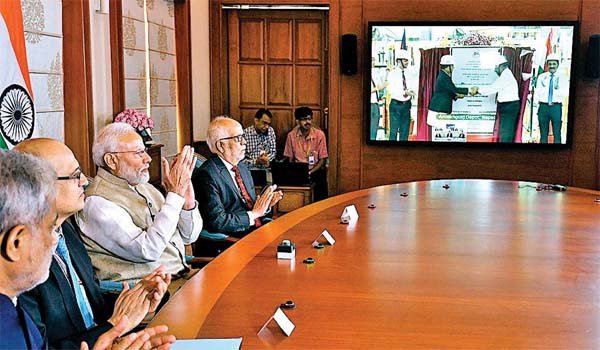All you need to know about India-Nepal cross-border oil pipeline

India-Nepal launched South Asia’s first cross-border oil pipeline that will help in regional connectivity amid Pakistan’s intransigence on approving SAARC connectivity pact. This indeed will revoke high hopes again on smooth regional connectivity and cooperation in the region.
PM Modi and Nepal PM Oli on Tuesday inaugurated South Asia’s first cross-border petroleum products pipeline from Motihari(in Bihar) in India to Amlekhgunj in Nepal via video conference. This will reduce retail oil prices in Nepal by Rs 2.
India is already supplying diesel to its eastern neighbour Bangladesh through the cross-border train and intends to build a pipeline to supply petroleum products.
Nepal PM expressed appreciation for the early implementation of the project. Modi said the 69-km Motihari-Amlekhgunj pipeline, having a capacity of 2 million metric ton per annum, will provide cleaner petroleum products at affordable rates to the people of Nepal.
Mending ties
Earlier tanker trucks have been used to transport the oil products from storage facilities in India to Nepal through crowded narrow border points. The trucks are believed to be one of the main reasons for clogging up the border checkpoints between the two South Asian states.
Nepal imports all of its oil products from India. The state-owned India Oil Corporation sells the products to state-owned, Nepal Oil Corporation.
Disarrangements in the border area have in the past led to disruptions of the supply.
In 2015, ethnic protests in southern Nepal against the country’s new constitution led to the closure of the border for months, leading to severe shortages of oil in the Himalayan state.
As protestors who were demanding changes in the constitution blocked the border points and highways of Southern Nepal not allowing tanker trucks to pass through.
This had created chaos among the people and forced them to travel on bus roofs and cut down trees to cook food, and schools had to close.
It was also at the time when Nepal was just recovering from a devastating earthquake that damaged an estimated one million structures and people were trying to rebuild their homes.
The protest and the closure of the border by the Madhesi ethnic group also put a strain on relations between India & Nepal, as India supported the ethnic group.
The protests fizzled out after a few months, but it took years for the two countries to mend their ties back to normal.
Both the Prime Ministers have made efforts to strengthen ties between the two countries. PM Oli invited PM Modi to visit Nepal during Tuesday’s inauguration ceremony, and Modi accepted. The Indian prime minister last visited Nepal in 2018.
“This will, without any doubt, enhance interconnectedness and interdependence between our two countries,” PM Oli said. “It is one of the best examples of connectivity in terms of trade and transit and infrastructure.”



















